Main Body
12. Romanian Contributions to Arts and Sciences
Since patriotism and nationalism are among the strongest forces which are reflected in art, poetry, music and literature of Romania, it would be well to probe into the wellsprings of these sentiments.
Romanian arts and literature evolved in much the same way as that of its European neighbors. During the medieval period, the prevalent themes were those of wars, heroism, warriors, and resistance to conquest. Epics range from the heroic Resistance to the Romans of the Dacians under Decibalus, to the Turkish wars wherein Vlad Dracula and Stephen the Great achieved immortality in Romanian annals.
In more recent times, the trend is toward social reform, social injustice, economic inequality, political struggle and revolution. Other Romanian writers, who are not residents of Romania, write of unrest and political foment in still another vein. The sentiment of patriotism has undergone a radical change in the United States. Originally, a founding father might have expressed his patriotism fervor in the ringing proclamation, “My country right or wrong.” This kind of burning devotion was also revealed in one of the most famous Romanian poems, “Song of Stephen the Great” by Dimitrie Bolinteanu.
Senator Frank Lausche of the American Slovenian community is fond of quoting this poem in his moving and fiercely patriotic speeches around the country. The essence of the story is that Stephen the Great returns home one night, wounded in the war against the Turks. His mother harkens to the knock at the castle door. “Who is it?” she asks. A weak voice replies, “It is I, good mother; your beloved son, sorely wounded.” Stephen pleads, “But open the door! The Turks surround me…” His wife rushes to open the door and is brusquely stopped by the Dowager Juerin, and Stephen’s mother cries out, “What say you stranger? Stephen is far away, in the camps of the enemy, his arm deals death to thousands. I am his mother, he is my son. If indeed you be he, I am not your mother. Since you are here, without victory, you cannot enter without my consent. Return to the armies. For your country die! And your tomb will be crowned with flowers.”
At these words, Stephen reels away, recovers his strength and resolve, sounds the rally, crushes the Turkish host and returns Victorious and triumphant, a national hero forevermore.
One is constrained, in the light of such patriotic passion, to compare the Dowager Queen’s indomitable resolve with more modern situations, and in so doing, many dilemmas demand the exercise of very difficult ethical opinions and judgments of moral value.
Historians
From an earlier time, the name of Alexandru Xenopol is preeminent. He wrote a monumental history of the Romanians and, throughout his works, he emphasized the growth of Romania to national spirit and devoted much attention and space to social and economic issues. C. Guirescu is also noted for his detailed and comprehensive study of Romania’s medieval history.
Professor Nicolae Yorga, erudite and gifted with a fantastic memory, master of many languages, was the most prolific author on the subject of Romanian history. He was deeply involved in and committed to the creation of the League of Nations (the ill-fated predecessor to the United Nations), and was in great demand as a guest lecturer in symposia across the world. He was brutally assassinated in a most heinous manner in 1940. Yorga inspired other gifted writers such as Mihail Sadoveanu, O. Iosif and Panat Cerna.
A new kind of journalistic history book was written by Tom Marotta entitled, For They are My Friends. As described in Popular Photography magazine of Decenber, 1976, it is a “photoreportage of the social and economic changes” which have occurred in Romania since World War II. Marotta says that the people “opened up to us!” (His new wife was half Romanian which probably helped.) “The people invited us into their homes… I found a warmth that I’ve never before found in people. These people have a love of country and culture.” That is Romania — not the production of tractors.
The magazine reports that, running through the book is “poetry by Romania’s most esteemed national poet, Mihail Erninescu (1850-1899).” Marotta is quoted as “hoping that some of the attention directed toward Dracula and Nadia Comaneci, the Olympic wonder, will rub off on his book.” We join him in his wish.
Writers and Poets
Dimitre Bolintineanu (1819-1873), author of Stephen the Great, was a brilliant manipulator of poetic forms. He wrote of historical legends and incorporated them into ballads and epic poems, and drew heavily upon heroic folklore for inspiration. His poetry is warm and patriotic.
Mihail Eminescu (1850-1889), poet par excellence, reached heights of splendor which are unmatched by any other Romanian poet. His unparalleled “Evening Star” (Luceafarul) is a peerless Romanian classic. A great patriot, he dramatized in his numerous works of verse and prose, the depths of his compassion for the privations of his people, and a spirit of hope for freedom. Many of his melodious poems have been set to music and are widely sung. Unfortunately, since he wrote in Romanian, his genius is fully appreciated only by those familiar with his language.
Grigore Alexandrescu (1810-1885), up to the time of Eminescu, was acclaimed as the greatest Romanian poet. He led a turbulent existence, completely dedicated to poetry and to improving the moral and political fiber of those who surrounded him.
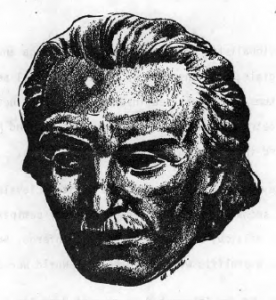
Vasile Alecsandri (1819-1890), is considered by many, including Eminescu himself, to be the “King of poetry.” Vasile was the most successful rhapsodist of all important events that contributed to the political and cultural rebirth of the Romanian people. He wrote of the heroic past, the mountains and the valleys, and the soul of Romania. He is alleged to have said, “Every Romanian is a born poet.”
Other nationalistic writers include Ion Creanga and Ion Luca Caragiale, also inspired by folklore as well as contemporary mores and customs. Creanga (see insert) wrote short novels, stories and poetry. Caragiale wrote many comedies and plays for the theater and incorporated many folklore anecdotes.
Two noted writers of the modern era visited Cleveland several years ago and sponsored a well attended literary seminar. They were Alexander Balarcu, an expert on Dante’s Inferno, and Balaci Zaharia, a prolific writer of the post World War II School.
For those who are interested in current Romanian literature, an anthology has been published which is intended as a literary introduction to Romania and its people. The anthology is entitled Introduction to Romanian Literature which was edited by Jacob Steinberg and published by Twayne Publishers, Inc. of New York City, 1966.
Readers who are already familiar with some of the classic names of Romanian literature would recognize them in the following list; but the anthology also reflects the current inspirations, concerns and life of the Romanian people. From the promotional cover of the book, the following statement is taken, “The passions and hopes of the heroes of these varied writings will strike a familiar note for the American reader.” The point is made that the same kind of problems and circumstances which affect the American scene, also are reflected in Romanian life such as the problem of three generations living in one household with all of its heartbreaking humor; the heavy hand of matriarchs in some homes; the battles of the generations and the sexes; the cataloguing of the ugly as well as the beautiful; all of these “prove that literature is preeminently a common ground which demonstrates how truly universal is the human condition.”
Authors who are represented in this anthology are: Ion Creanga with his Recollections from Childhood. Creanga’s style of lyrical and humorous prose, laden with optimism and satire, enhanced by proverbs, sayings and images drawn from folklore, are representative of the strong earthy hutnor of this generation. He has been considered the Rabelais of Romanian literature. A more modern writer, Zaharia Stancu, and his Lilac Time relates more to social problems and Stancu, in his works, has presented a large panorama of the social life of Romania in the first half of the twentieth century.
One of the better known modern writers is Mihail Sadoveanu who is a master of detail and humor, and is acclaimed by many of his countrymen as the foremost writer of his time. His death was premature but his output was considerable, and he has exerted a great influence on twentieth century Romanian literature. Sadoveanu uses a good deal of psychology in his works and even the titles of his books convoke the kind of summary of his position and image of his personal philosophy. His books include: The Mud Hut Dwellers, Tales of War and Evening Tales. These books are also all available from Twayne Publishers of New York City.
For the serious student of National literature, it would be well to read the works of the older masters as well as those of contempraneous authors in order to be able to more fully appreciate the evolution of thought undergone by the Romanian people and their adjustment to social conditions in the intervening years. The Cleveland Public Library, in the past decade, has acquired a number of excellent anthologies and other works by Romanian authors and is readily available to those who are interested in the subject.
For a penetrating look into the Romanian soul, an excellent book gives us such insight in a lovely and delightful collection of poems entitled, The Bard of the Dimboritza. This collection of peasant Romanian folk songs was published by James R. Osgood, McIlvaine and Co. of London, many years ago. The collector was Helene Vacaresco and the translators were Carmen Sylva and Alma Strettell.
Carmen Sylva was the pen name of Queen Marie of Romania. In the introduction, she tells of the efforts of the young poetess-collector to induce the peasants to sing their songs for her. She learned to spin so as to hear the girl spinners; she hid in the tall corn to hear the “reapers crooning”; and she listened at cradles, dances, taverns, weddings, and death-beds.
The melancholy, the subtle beauty, the simple beauty of this treasure-trove, combine in a kind of natural alchemy to reveal the true spirit of the Romanian peasant. Many are not rhymed and not accompanied by any musical instrument except, in some cases, for the lute of the “Cobyar.” The inner title of the book is, in fact, “Lute-players songs.” The song titles are at once invocative and nostalgic in themselves: Death for Love, Song of the Fire, Hopeless, Gypsy Song, Song of the Shroud, At a Grave, If She Were Yet Alive, The Dead Wife’s Kins, Two Souls, The Well of Tears, Song of the Dagger, River of Tears, The Black Heart, The Other One, Dirge, On the Death of a Young Man (Maiden and Child).
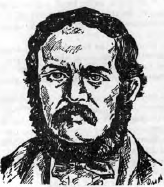
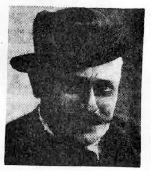
Some Outstanding Leaders Romanian Literature
By GEORGE ANAGNOSTACHE
TITU MAIORESCU (1840-1917)
The foremost literary critic of Romania
After finishing his studies in Berlin and Paris, Maiorescu returned to Romania and was named professor of philosophy and logic at the University of Iasi; later he occupied the same chair at the University of Bucharest.
Together with Petre Carp and Ion Negruzzi, two other Moldavian writers and political figures, he organized the literary society “Junimea” of Iasi, which in turn started publication of “Convorbiri Literare” (Literary Discussions), still the best literary magazine of Romania. Eminescu, Creanga, Vlahutza and many other poets published their first works in this magazine.
He was the first to collect and publish in volume form the poetry of Eminescu and to reveal to the Romanians and to the world his poetical genius. His articles on Eminescu, Alecsandri and other contemporary writers are by far the most profound and lucid analyses of the literary trends of his time; moreover, they are in themselves great works of literature.
Also active in politics, Maiorescu presided, as prime minister, at the peace conference between Romania and Bulgaria after the Balkan war of 1913.
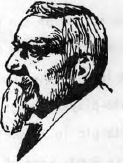
ION CREANGA (1837-1889)
The best known Romanian raconteur
It Is said of Creanga that he wrote as he lived and lived as he wrote. Of peasant origin, he remained a peasant all his life: Genuine, kind, good-natured, a bit ironic, understanding, patient and industrious.
He was a pupil of Titu Maiorescu, the famous literary critic and a life-long friend of Mihail Eminescu, the great poet. Through them he joined the literary society “Junimea” of Iasi (Jassy) in whose magazine “Convorbiri Literare” he published most of his work.
Creanga’s best known publications are his “Amintiri din Copilarie” (Childhood Reminiscences) and “Povesti” (Tales) in which he vividly and engagingly describes, in his inimitable Moldavian dialect, the happenings, the customs and the people of his native village Humulesti, using the rustic life of Northern Moldavia as a background.
As a grade teacher, he edited and published a series of text and reading books for children that were used for many years in the Moldavian primary schools.
His “Childhood Reminiscences” have been translated in Italian and English.
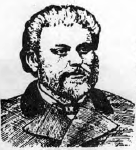
(From “The New Pioneer,” page 14.)
ALEXANDRU ODOBESCU (1834-1895)
The aesthete of Romanian literature
Odobescu was a man of many achievements: Diplomat, jurist, historian, archaeologist, educator and a great writer. In all these fields he left a deep imprint.
Odobescu started his literary career by publishing poetry and articles in “Romania Literara” (Literary Romania), a magazine edited by Vasile Alexandri. His talents and erudition were soon recognized. At the age of 29, he became Minister of Education and when only 33 years old he was entrusted with the important mission of organizing the Romanian section at the International Exposition in Paris (1867).
In the field of archeology, Odobescu published two important works: “Istoria Arheologiei” (The History of Archeology) and “Closca cu Pui (The Treasury of Pietroasa), this last one a brilliant interpretative study of Roman relics found in Romania.
He is mostly known and admired however, for his two historical novels “Mihnea Voda” and “Doamna Chiajna,” in which he depicts the turbulent period of these Romanian rulers. Another outstanding publication is his “Pseudocynegeticos,” a scholarly description of the literary works of all times pertaining to hunting subjects.
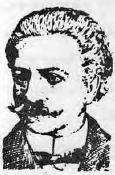
ALEXANDRU VLAHUTZA (1858-1919)
Poet and journalist of distinction
The Romanians consider Vlahutza as the worthiest successor of Eminescu. In many respects this is true: a note of eminescian melancholy and pessimism prevails in his poetry, especially in that of his youth. Like Eminescu, he is meditative and philosophical, and as in the case of that great poet, his inspiration sprang from the soul and soil of the Romanian people.
Vlahutza is not an imitator however. His work stands out by itself. He excells not only as a poet, but also as a novelist, short-story writer and journalist. Above all he used his great talent to make the Romanians conscious of their glorious heritage and of the natural beauty of their country.
In “Din Trecutul Nostru” (Out of our Past), he presents the epopee of the Romanian people in sketchy historical portraits and episodes. Professor Charles Upson Clark, the well known American scholar, calls this work “the most graphic and charming series of historic episodes I have ever read in any language.”
In another remarkable publication “Romania Pitoreasca” (Picturesque Romania), Vlahutza records his impressions of his travels throughout Romania. Beautifully written and challenging in its descriptions, this travel book, more than any other writing, has developed in the Romanians a greater appreciation of their own country and people.
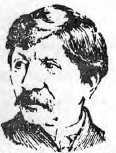
(From “The New Pioneer,” page 15.)
Artists and Painters
Romania has a plithora of outstanding artists and painters. However, few are known to Americans with the possible exception of Theodor Aman, Stefan Luchian, Ion Andrescu and Nicolae Grigorescu. The latter is very well known and popular with Americans of Romanian descent. Many lithographic reproductions of his pastoral scenes hang on the walls of this community’s homes.
Grigorescu is bold and colorful. His style accurately and warmly portrays peasants and their oxen in the fields. His portraits of the grizzled faces of patriarchic farmers and their impassive wives are masterpieces of realism.
Sculptors
Romania enjoys the contributions of many talented sculptors, old school and new, such as Karl Storck (First Professor of Sculpture at the Bucharest School of Fine Arts), Ion Georgescu, Eustake Altimi and Gheorghe Asachi.
But, the great among them, and of the sulpture of the world, is Constantin Brancusi — that grizzled innovator and eternal pursuer of the Heroic Spirit. Critics and admirers have been lyrical, nearly ecstatic over his superb interpretations of time, space, and man’s quest for inmortallty. They rhapsodize over his “Gate of the Kiss,” his “Table of Silence,” and “Bird in Space.”
Although Brancusi insisted that he was not an abstractionist and that he sought to capture the “essence of real inner form” of his subject matter and not merely its external shape, he did manage to suspend time, space and dimensions in stone. Inanimate stone became a living essence through his genius.
When he created “The Kiss,” he was 31, in 1901. His last major work was the park complex, 1937-38, in Tirgui Jui, Romania (“Table of Silence” with 12 stools and the “Gate of the Kiss”).
Throughout all of his works. Brancusi sought to represent the heroic nature of man as immortalized by Divine Power, the freeing of man from his earthly ties of length, breadth, width, and time — to sublimate man into the Super Hero — and he personally believed he had ever failed in this transcendental task. However, he continued to try, and try, and try to the end.
A partial list of his remarkable achievements include: “Torment” (1906), “The Prayer” (1907), “Prodigal Son” (1915), “Socrates” (1923), “Chimera” (Circa 1918), “The Seal” (Circa 1936), “The Cock” (1924), “Bird in Space” (1923), “The Sorceress” (1916-1922). “Torso of a Young Man” (1917 and 1923), “Timidity” (l915), “White Negress” (1924 and 1928), “The Chief” (1925), “The Endless Column” (1937), “Gate of the Kiss” (1938), and “Table of Silence” (1938).
The “Endless Column” was so constructed by Brancusi that, even granted its great height (96 feet, 2 7/8 inches tall), when one stands at the base and looks up the Column, it appears to go upward indefinitely. The magnificent illusion, the unusual visual paradox, is a triumph of human transcendental perception.
Scientists and Inventors
Historian C. Guirescu contended, in an article in “Tribute Romaniu,” October 1, 1974 issue, that Romania has made great economic progress and that “a solid tradition, a century old propensity of our people” is the cause.
Exceptional advancements have been made in stience, in the field of technology, and in the area of inventions. It is not well known, but nevertheless a fact, that Henri Coando, a brilliant scientist, was the inventor and pilot of the first jet in the world (Canada, 1910).
“The first rail-driven vehicle in the history of technique and the first points were made in Brad, Transylvania by a Wallachian craftsman in the 15th century,” is written in the above mentioned article. Aurel Vlaicu constructed and flew the first metal structured fuselage in the world. Dr. Ana Aslan is a poineer in gerontology and her product, Geronital, is world famous (allegedly arrests the aging process).
One of the most famous scientists in aviation and aerospace technology, Herman Oberth, was born in Siberi, Romania. He is considered the founder of aeronautics and created many original kinds of outer space rockets.
The following is a list of other important Romanian figures in the fields of science and technology (from Tribuna Romaniei, October 1, 1974, page 7):
Orban, the Dacian gunman, manufactured two cannons of big power the same century, that decisively helped conquest of Byzantium.
Conrad Haas, a Transylvanian Saxon scholar and pyrotechnist, is the world inventor of the three-stage rocket, also produced by him in 1555. He also made the Delta-shaped direction stabilizer.
In the 18th century, Munteanu Urs, Idu Craciun and Constantin Palade, miners of the Apuseni mountains, authored some important inventions (stampheads or orewashing machines).
Augustin Maior, a technician, physicist and mathematician, invented the multiple telephony, proving that five calls are possible on the same circuit.
I.N.G. Daniilescu, one of our numerous inventors of farm machinery. His “hoeing plough” was silver medalled at the Paris Universal Exhibition in 1889.
G.C. Cosmovici and Theodor Dragu invented locomotive fuel oil injectors. The former also manufactured an original greasing box, successfully used at home and abroad.
Dumitru Brumarescu, a technicist of remarkable ingenuousness, authored numerous inventions: a reed-cutting machine, a submarine rescuer, a plane, an automated system of carriage couping, etc.
Martin Banc, after the first world war, was granted the first world certificate to produce acethylene out of methane gas.
Aurel Vlaicu — a brilliant plane manufacturer and pilot, a prestigious novatory name as concerns aviation techniques. He produced the first fuselaged plane with metallic structure in the world.
Theodor Manciulescu, the inventor of “electrografofon” (1903-1906) a predecessor of the tape-recorder of nowadays, based on the sound electromagnetic recording on metallic wire.
Anghel Saligny — the most proeminent engineer of former periods. He built the first reinforced concrete and prefab elements silos in the world. The bridge at Cernavoda, thought out by him, also boasts remarkable technical novelties.
Rodrig Goliescu, inventor of avant-garde aviation constructions among which are the aircholeoptherus.
Ion Stroiescu — devised and tested the first rocket driven air models and built the first aerodynamic blowing workshop in Romania.
Gheoghe Cristescu — a forerunner of T.V. Granted in 1929 in Paris a certificate for long distance live image broadcasting.
Anastase Dragomir — inventor of the first launch railed cockpit in the world, patented in Paris in 1930.
Lazar Edeleanu — author of great many inventions among which the most important and widely used — the device of low temperature selective refining with sulphur dioxide of crude oil (1908).
Nicolae Teclu, inventor of the automatically regulated gas bulb bearing his name as well as of many other lab apparatus and procedures. He taught chemistry at the Vienna University and was a member of the Romanian Academy.
Alexandru Ciurcu — a pioneer of reaction technique. During the last decades of the previous century, he was granted certificates in Paris for jet propelled vehicles.
Traian Vuia — a poineer of world aviation, creator of the steam generator bearing his name. He was the first in the world to have succeeded in taking off exclusively due to the apparatus aboard his plane (March 18, 1906).
George de Bothezat — worked especially in the U.S. where he thought out and tested a new type of helicopter.
Gogu Constantinescu — a prestigious inventor, founder of sonicity and sonic outfit of great importance for technical uses. He was particularly active in Great Britain.
Herman Oberth — founder of astronautics. Born in Sibiu, he authored his first works while in Transylvania and worked later on in Germany. A creator of original types of outer space rockets.
Henri Coanda — a brilliant scientist, a man of genius with multilateral preoccupation and achievements. The inventor and pilot of the first jet in the world (Canada, 1910), discoverer of the Coanda Effect.
Aurel Persu — an engineer, author along several ten years of multiple technical inventions. He manufactured the first car based on aerodynamic principles whose wheels were closed in its body.
Ion Basgan — inventor of a new drilling system on the basis of a new interpretation of the laws of physics and on sonicity. Licences in Romania and in the U.S.
Elie Carafoli — professor and Adademician, a world reputed authority in aerodynamics. Creator of a new type of plane wing and of other numerous novelties in aviation technique. Awarded the Paul Tissandier international diploma.
Paul G. Dimo — a corresponding member of the Academy of the Socialist Republic of Romania, inventor of an important coordinating device for power systems operation.
Matei Marinescu — son of great neurologist Gheorghe Marinescu, a corresponding member of the Academy of the Socialist Republic of Romania, a specialist in electrocommunication, automatics, electroacoustics, inventor of an original alternate motion electric engine (oscilo-engine).
Ilie Barbu — inventor of an efficient procedure for coke producing out of non-coking coal by ordinary methods.
I. Butanescu — inventor of a large scale usage system in cinematography for visible text separation from the film.
C. Teodorescu-Tintea, inventor of remarkable aviation and noise attenuating devices setting out from the Coanda Effect.
Ms. Ana Aslan, Adademiciah, a world reputed scientist in gerontology. Her fabrication technology of Gerovital the same as the product itself, a Romanian invention, are world famous today.
(Essay prepared by Nicholas Bucur) Ed.
